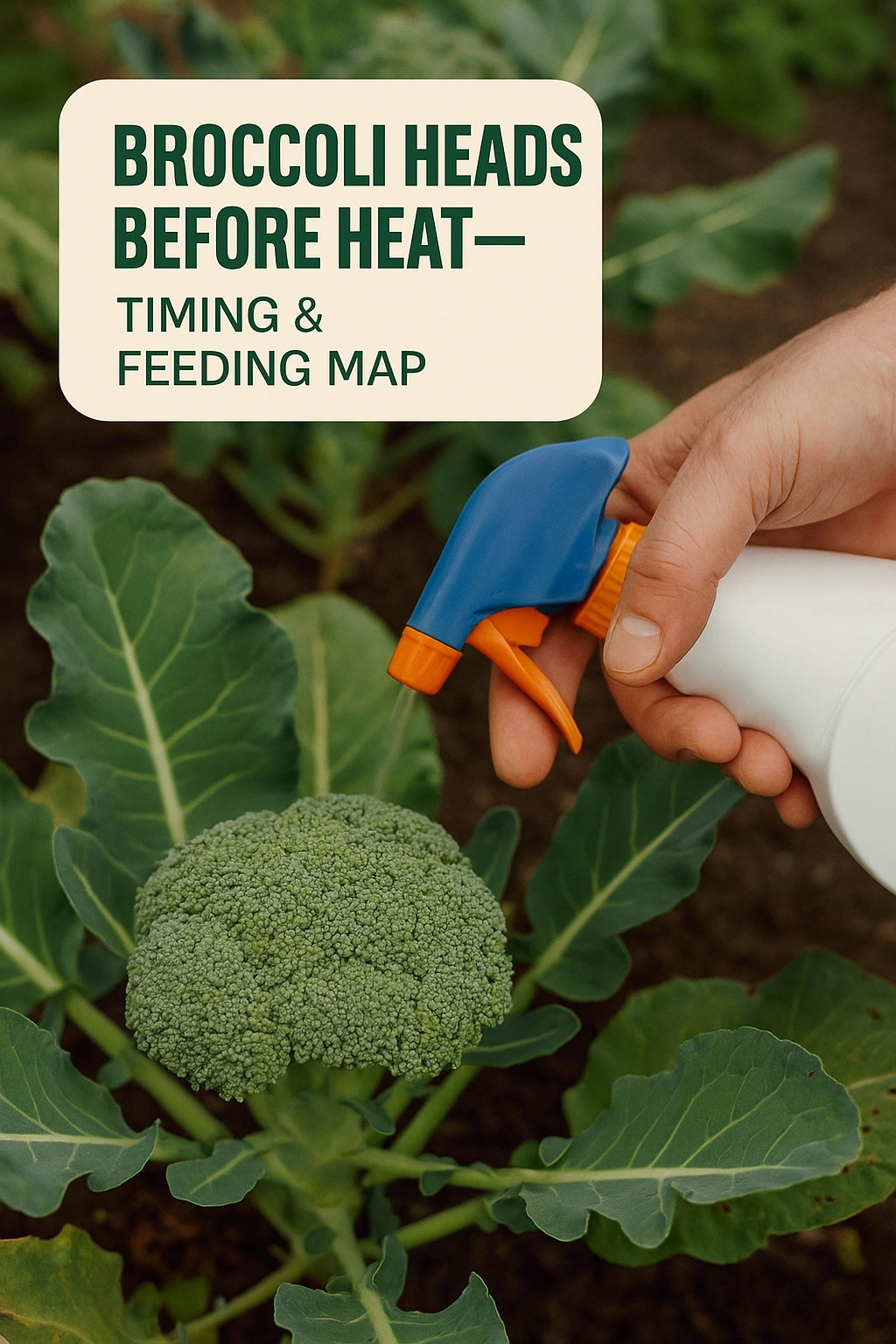
Growing broccoli can be a rewarding endeavor, but timing is crucial, especially when it comes to feeding your plants before they experience heat stress. This article dives into the essential aspects of feeding broccoli, ensuring you provide the right nutrients at the right time. By understanding the growth stages and nutritional needs of broccoli, you can maximize your harvest and enjoy healthy, vibrant plants.
The Importance of Timing in Broccoli Growth
Timing plays a significant role in the growth of broccoli. This vegetable thrives in cooler temperatures, and heat can cause it to bolt, leading to undesirable flowering and a decline in quality. Understanding the growth phases of broccoli and how to feed them accordingly can help prevent premature bolting and ensure a fruitful harvest.
Growth Stages of Broccoli
Broccoli undergoes several growth stages, each requiring different care and nutrition. Recognizing these stages will allow you to tailor your feeding schedule effectively. The main growth stages include seedling, vegetative, and reproductive phases.
Seedling Stage
During the seedling stage, which lasts for about four to six weeks after germination, broccoli plants are establishing their roots and initial leaves. At this point, it is crucial to provide a balanced fertilizer that promotes root development.
Vegetative Stage
The vegetative stage lasts from six weeks after planting until the plant begins to form heads. During this phase, broccoli requires more nitrogen to support leaf growth. A nitrogen-rich fertilizer can enhance development and prepare the plant for head formation.
Reproductive Stage
The reproductive stage begins when the plant starts to form flower heads. At this point, broccoli should receive a balanced fertilizer that supports flowering while still providing necessary nutrients for healthy growth.
Feeding Broccoli: A Timing Map
Creating a feeding map for your broccoli allows you to provide the right nutrients at the optimal times. Here’s a detailed breakdown of what to feed your plants and when.
Weeks 1-2: Establishing the Seedlings
In the first two weeks after germination, focus on a gentle feeding strategy. A diluted liquid fertilizer with a balanced N-P-K ratio (Nitrogen-Phosphorus-Potassium) can help seedlings establish their roots without overwhelming them.
Weeks 3-4: Promoting Leaf Growth
As your seedlings grow, transition to a nitrogen-rich fertilizer. This will support vigorous leaf development. Feed your plants every two weeks, ensuring the fertilizer is well diluted to avoid fertilizer burn.
Weeks 5-6: Preparing for Head Formation
As broccoli approaches the head formation stage, switch to a fertilizer higher in phosphorus and potassium. This change will promote healthy flower head development. Continue feeding every two weeks, monitoring plant health closely.
Weeks 7-8: Flower Head Development
During the final weeks leading up to harvest, maintain a balanced feeding approach. A fertilizer that contains micronutrients can be beneficial at this stage to ensure the heads are firm and flavorful. Regular watering is also essential to support nutrient uptake.
Environmental Factors Affecting Broccoli Growth
Aside from feeding, environmental factors significantly influence broccoli’s growth and timing. Understanding these elements can enhance your gardening practices.
Temperature Control
Broccoli thrives in cooler temperatures, ideally between 60°F and 70°F. If temperatures rise above 80°F, the risk of bolting increases. Consider using shade cloth or row covers to protect your plants during heat waves.
Soil Quality
Soil quality is vital for healthy broccoli growth. Ensure that your soil is well-draining and rich in organic matter. Conduct a soil test to determine nutrient levels and amend the soil accordingly before planting.
Watering Practices
Consistent watering is essential, especially during the head formation stage. Broccoli requires about an inch of water per week. Use drip irrigation or soaker hoses to maintain even moisture without wetting the foliage, which can lead to disease.
Common Issues in Broccoli Growth
Even with the best care, broccoli can encounter several issues. Identifying these problems early can help you take corrective action.
Pest Management
Common pests, such as aphids and cabbage worms, can threaten your broccoli. Implementing organic pest control methods, like introducing beneficial insects or using insecticidal soap, can help manage these pests effectively.
Nutrient Deficiencies
Watch for signs of nutrient deficiencies, such as yellowing leaves or stunted growth. Adjust your feeding program based on the specific deficiencies observed. A soil test can provide valuable insights into nutrient levels.
Frequently Asked Questions (FAQs)
What is the best time to plant broccoli?
The best time to plant broccoli is in early spring or late summer, allowing for growth in cooler temperatures. Aim for a planting time that corresponds to your local climate and frost dates.
How often should I fertilize my broccoli?
Fertilize your broccoli every two weeks during the active growth phases, adjusting the type of fertilizer based on the growth stage of the plant.
What should I do if my broccoli starts to bolt?
If your broccoli begins to bolt, consider harvesting the heads early to prevent further flowering. Providing shade and consistent moisture can help reduce stress on the plants.
Can I grow broccoli in containers?
Yes, broccoli can be grown in containers as long as they are large enough (at least 5 gallons) and have good drainage. Ensure the container is filled with nutrient-rich soil and monitor water levels closely.
What are the signs of over-fertilization in broccoli?
Signs of over-fertilization include wilting, yellowing leaves, and leaf burn. If you suspect over-fertilization, flush the soil with water to dilute the excess nutrients.
Conclusion
Feeding broccoli heads before heat is essential for maximizing your harvest. By understanding the timing and nutritional needs of your plants, you can enhance their growth and prevent heat stress. With the right care and attention, you can enjoy a bountiful crop of healthy, delicious broccoli.
